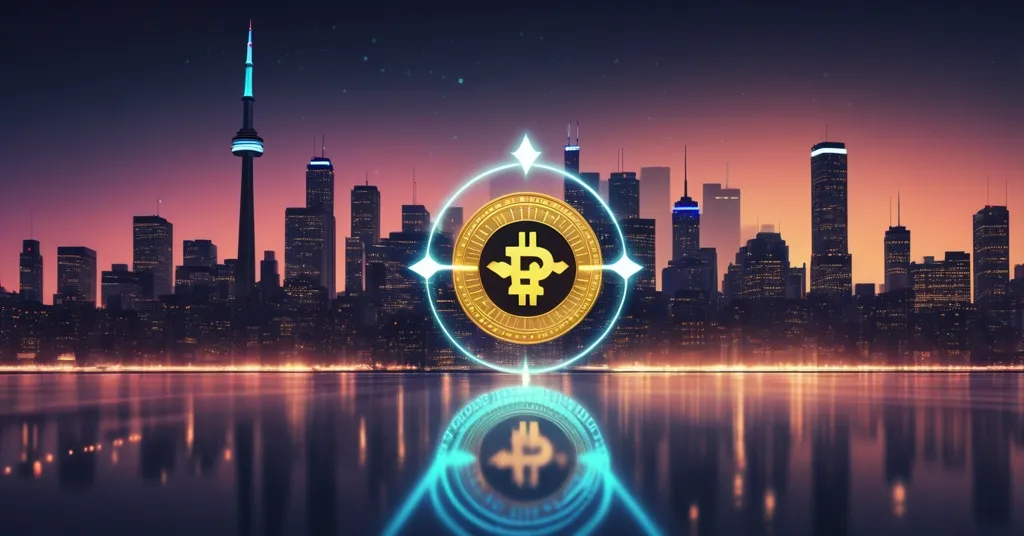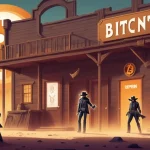Canada Approves XRP ETF: Mainstream Win or Centralization Trade-Off?

XRP ETF Hits Canada: A Win for Crypto or a Centralized Compromise?
Canada has taken a bold step forward in the crypto realm with the Ontario Securities Commission (OSC) approving a spot XRP exchange-traded fund (ETF) by Purpose Investments Inc. This financial product is slated to launch on the Toronto Stock Exchange (TSX) on June 18, 2025, marking a significant moment for XRP and potentially for blockchain adoption in mainstream finance. But as we cheer this milestone, let’s not ignore the nagging question: is this a victory for decentralization, or just another way to leash the untamed spirit of crypto?
- Major Milestone: OSC approves spot XRP ETF, set for TSX listing on June 18, 2025.
- Market Buzz: XRP price reportedly climbs 8% post-announcement, with whale activity at record highs.
- Caution Flag: Speculative altcoin hype and price predictions demand a skeptical eye.
Background: XRP and the Road to Regulation
For those new to the scene, XRP is the native token of the XRP Ledger, a blockchain designed for lightning-fast, low-cost cross-border payments. Created by Ripple Labs, XRP aims to disrupt traditional financial systems like SWIFT by enabling near-instant transactions with minimal fees. However, its journey hasn’t been smooth—Ripple has been embroiled in a legal showdown with the U.S. Securities and Exchange Commission (SEC) since 2020 over whether XRP qualifies as a security, akin to a stock tied to a company’s performance and subject to heavy regulation. A 2023 court ruling offered partial clarity, stating XRP isn’t a security in secondary market trades, which likely boosted confidence in regulated products like this ETF. This backdrop makes Canada’s approval a noteworthy chapter in XRP’s saga.
What the XRP ETF Means for Investors
Purpose Investments, the firm that broke ground with the world’s first Bitcoin ETF in 2021, is behind this latest venture. Managing over $24 billion in assets, they’re no small player in financial innovation. The Purpose XRP ETF trading on the Toronto Stock Exchange will trade under tickers such as XRPP (CAD-hedged), XRPP.B (CAD non-hedged), and XRPP.U (USD), offering traditional investors a way to gain exposure to XRP without the headache of managing wallets or private keys. For the uninitiated, an ETF is a financial product that tracks an asset’s price—here, XRP—and trades on stock exchanges like the TSX, acting as a bridge for mainstream investors wary of diving directly into crypto’s wild waters.
Vlad Tasevski, Chief Innovation Officer at Purpose Investments, captured the significance of this move with a clear vision of its impact:
“The OSC’s granting of a receipt for the Purpose XRP ETF prospectus reinforces Canada’s global leadership in building a regulated digital asset ecosystem. We’re proud to continue pushing the boundaries of what’s possible in the space by offering investors simple, secure access to the infrastructure powering real-world blockchain adoption.”
This isn’t just a win for XRP holders; it’s a signal that blockchain technology is inching closer to acceptance in traditional finance. Canada’s progressive stance—having already greenlit Bitcoin and Ethereum ETFs—sets it apart from more hesitant regulators like the U.S. SEC, where spot crypto ETFs remain a contentious issue. The XRP ETF could lower barriers for institutional money to flow into crypto, potentially boosting liquidity and lending legitimacy to digital assets as a whole. But let’s pump the brakes on the hype—there’s more to unpack.
Market Reactions: Genuine Momentum or Manufactured Hype?
Following the announcement, reports suggest XRP’s price spiked 8% on June 16, 2025, though hard data on this remains unconfirmed. On-chain activity paints an intriguing, if murky, picture: around 2,700 whale wallets—large investors whose moves can ripple through markets like a boulder in a stream—now hold over 1 million XRP each, a historic high if true. Additionally, active addresses and whale activity on the XRP network reportedly surged to 295,000 per day last week, up from a typical 35,000–40,000. These metrics hint at growing interest, possibly driven by anticipation of ETF-fueled adoption or institutional positioning. Yet, without verified sources (check platforms like CoinGecko or Glassnode for real-time data), we’re left squinting at shadows—could this be organic enthusiasm or just whale manipulation? Crypto’s history of pump-and-dump schemes keeps skepticism alive.
Centralization Concerns: XRP vs. Bitcoin’s Ethos
For those of us who live and breathe decentralization, the XRP ETF brings a bitter aftertaste. Unlike Bitcoin, which operates on a fully decentralized network with no central authority, XRP is tightly linked to Ripple Labs, a company that controls a significant chunk of the token supply and drives its development. This setup clashes with the censorship-resistant, privacy-first principles that Bitcoin maximalists hold dear—the idea of “not your keys, not your crypto” as a bastion of financial freedom. ETFs, by design, are custodial products; investors don’t own the underlying XRP but rather a claim on it through a brokerage. It’s a far cry from being your own bank, a core tenet of the crypto revolution we’re fighting for.
On the flip side, there’s an argument to be made that XRP’s utility in cross-border payments fills a niche Bitcoin doesn’t aim to touch. The XRP Ledger uses a consensus mechanism, distinct from Bitcoin’s energy-intensive proof-of-work, allowing transactions to settle in seconds—something banks and financial institutions find appealing. Real-world adoption, with Ripple partnering with firms for remittance solutions, shows XRP’s practical edge. Could this ETF indirectly benefit Bitcoin by normalizing crypto in regulated spaces, paving the way for broader acceptance? Perhaps, but for purists rooting for effective accelerationism (e/acc) and a complete disruption of centralized systems, this feels like a compromise wrapped in a shiny financial package. For deeper insights into this tension, consider exploring discussions on XRP’s centralization debate.
Canada’s Regulatory Leadership: A Global Catalyst?
Canada’s regulatory environment stands out as a beacon compared to the U.S., where the SEC’s slow dance with crypto continues to frustrate innovators. The OSC’s track record—approving Bitcoin and Ethereum ETFs with significant trading volumes post-launch—demonstrates a willingness to integrate blockchain into traditional markets. The OSC approval of the XRP ETF by Purpose Investments could pressure other jurisdictions to follow suit, especially as institutional demand for crypto exposure grows. Europe and Asia, watching from the sidelines, might accelerate their own frameworks if Canada’s experiment proves successful. However, there’s a dark side: increased regulation often brings tighter controls. If governments overreach with compliance demands, the raw, disruptive potential of decentralized tech could be stifled—a concern for anyone championing freedom over bureaucracy.
The Dark Side of Hype: Altcoin Scams and Baseless Predictions
While XRP’s news grabs headlines, it’s also unleashed a predictable wave of speculative nonsense. Some analysts are throwing around price targets for XRP like $3 in the near term and $4 by year-end, citing technical mumbo-jumbo such as support levels at $2.05–$2.10, resistance at $2.34, and an RSI of 46 signaling “neutral-to-bullish” sentiment. Let’s cut through the fog—these predictions are about as reliable as a coin toss by a carnival psychic. Crypto’s volatility makes such forecasts laughable, and we’re not here to fuel fear of missing out (FOMO) with baseless numbers. Our focus is adoption through education, not gambling on crystal-ball guesses.
Then there’s the shilling of obscure altcoins like Snorter Token ($SNORT), BTC Bull Token ($BTCBULL), and Aura ($AURA), pitched as the next big thing to ride the market wave. Claims of million-dollar presales and triple-digit surges lack any verifiable backing, and frankly, smell like a scam waiting to happen. Presale projects and meme coins often prey on retail investors with promises of quick riches, only to vanish with the cash. If you’re tempted, remember: without a whitepaper, a transparent team, or a clear use case, you’re likely betting on thin air. No bullshit—speculation isn’t innovation, and we’re not here to peddle snake oil. Stick to fundamentals and do your own research before touching these gambles. For community perspectives, check out discussions on altcoin presale legitimacy and scam concerns.
Long-Term Implications: Adoption vs. Autonomy
So, where does this leave the crypto landscape? The XRP ETF could be a catalyst for mainstream adoption, drawing institutional capital and stabilizing markets with increased liquidity. It showcases blockchain’s real-world impact, especially in niches like payments where Bitcoin’s store-of-value proposition doesn’t compete. Yet, the custodial nature of ETFs and XRP’s centralized roots raise red flags for those of us pushing a future where individuals control their wealth without intermediaries. There’s also the risk of regulatory creep—today’s progressive approval could become tomorrow’s iron fist if governments weaponize oversight to curb decentralization. Community reactions to this development can be found in discussions like those on Reddit about the XRP ETF in Canada.
For Bitcoin maximalists, this development might seem irrelevant or even counterproductive. But consider this: every step toward normalizing crypto in finance could indirectly spotlight Bitcoin’s unique strength as a decentralized, scarce asset. XRP’s ETF doesn’t diminish BTC; it highlights the diversity of blockchain applications. Still, we must stay vigilant—freedom and privacy aren’t negotiable, and no regulated product should dilute the raw power of self-custody and peer-to-peer systems. If you’re curious about broader market implications, take a look at analyses like what’s next for crypto investments post-XRP ETF launch.
Key Questions and Takeaways for Crypto Enthusiasts
- What does Canada’s XRP ETF approval signify for blockchain adoption?
It’s a major stride toward integrating cryptocurrency into traditional finance, lowering entry barriers for investors and potentially increasing market liquidity and credibility. - Why does XRP spark debate among decentralization advocates?
Tied to Ripple Labs, a centralized entity, XRP strays from Bitcoin’s ethos of autonomy and privacy, creating tension for those prioritizing censorship resistance. - Can we trust price predictions and altcoin pitches linked to this news?
Hard no—predictions like XRP hitting $3 or $4 are speculative nonsense, and altcoins like $SNORT often lack substance, posing high risks of scams or losses. - How could this ETF influence Bitcoin and other blockchain projects?
It might accelerate broader crypto ETF approvals, boosting market interest, though Bitcoin’s unparalleled decentralization remains its defining edge over utility-focused tokens like XRP. - What risks persist with crypto investments, even via regulated ETFs?
Volatility, regulatory shifts, and custodial dependencies linger—ETFs don’t shield you from crypto’s wild swings or potential government clampdowns.
The launch of the XRP ETF in Canada is a pivotal moment, blending blockchain with the old guard of finance. It’s a cause for optimism if you’re betting on practical applications of this tech, but a reality check if you’re all-in on dismantling centralized control. Whether you’re a Bitcoin diehard, an altcoin adventurer, or just dipping a toe into this financial upheaval, keep your wits sharp. Decentralization isn’t a gift handed down by regulators or ETFs—it’s a battle we wage with every choice to hold our own keys and question the status quo. Let’s celebrate the wins, but never stop fighting for the real revolution.



